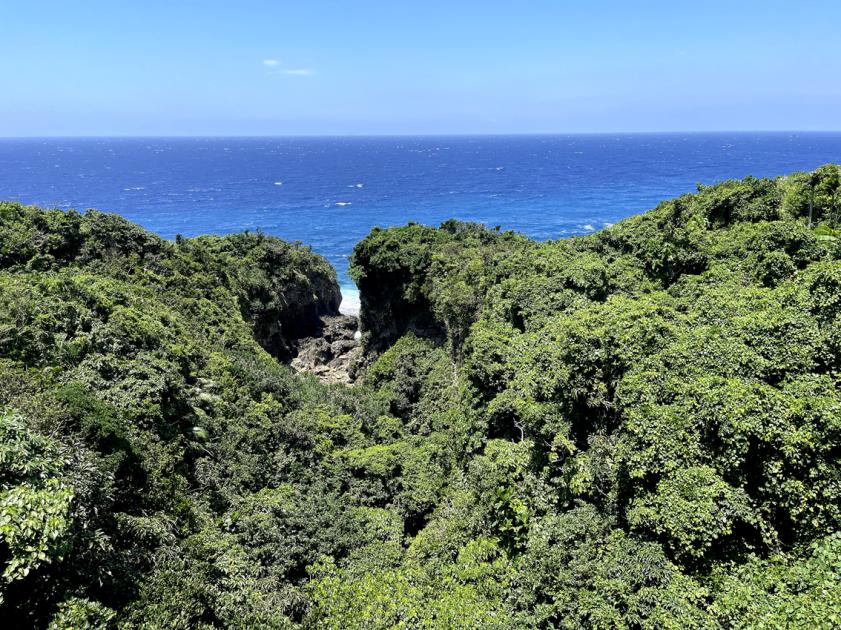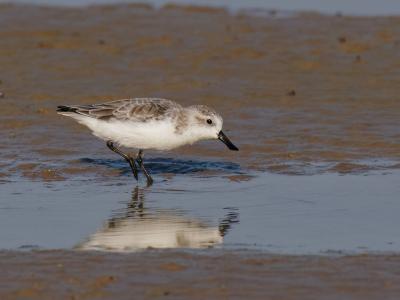Taiwan
Tour Price to be Determined
2027
Tour Price to be Determined
Tour Price to be Determined
2027
Tour Price to be Determined
Early Portuguese sailors dubbed Taiwan “Isla Formosa”—the beautiful island—and although the title was abandoned some time ago in favor of the Chinese name, Taiwan is still a strikingly attractive island with some spectacular mountain scenery. Sitting astride the Tropic of Cancer, less than 250 miles from north to south and no more than 100 miles wide, Taiwan boasts impressive geographic and ecological diversity. A dramatic mountain range forms the island’s backbone and is flanked either side by a broad, flat coastal plain that is warm and humid.
Amazingly, few Western birders have experienced Taiwan’s rich bird life. We’ve been missing out, as many of the species are generally far easier to see here than in most other Asian countries. Moreover, Taiwan is an affluent nation with a good tourist infrastructure and road network, and traveling around is genuinely easy. Most important, Taiwan boasts an impressive array of 32 endemic species that include Taiwan Yuhina, Collared Bush Robin, White-eared Sibia, Steere’s Liocichla, and the more recently split Taiwan Cupwing, Taiwan Shortwing and Black-necklaced Scimitar Babbler.
Endemic birds are not all that Taiwan has to offer, however. The island is the winter home of the bulk of the tiny world population of Black-faced Spoonbill, and we expect to see a few lingering birds. The tour’s timing, at the height of the northbound spring migration, means that we’re also sure to find a decent number of East Asian migrants. We also stand a very good chance of seeing that most elusive of Asian birds, Fairy Pitta.
Day 1: The tour begins this evening at our hotel in Taipei. Night in Taipei.
This was a fantastic tour. Paul couldn’t have been better. Best eyes and ears I’ve ever experienced and a will to get everyone to see each bird. - Hank K.
Day 2: After breakfast we’ll travel a short distance to the Taipei Botanical Gardens for an introduction to Taiwan’s more common birds. These are sure to include Swinhoe’s White-eye and Light-vented Bulbul, and this site is also one of the best for both Taiwan Barbet and Malayan Night Heron. We should be able to find at least one of the latter stalking earthworms somewhere in the small gardens. A pair of Crested Goshawks also breed in the park most years. From there we’ll drive southwest, away from Taipei and up into the hills at Da Syue Shan (literally “Big Snow Mountain”). Even though this site holds most of the island’s endemic birds, we’ll make several stops en route, perhaps to search for Black-necklaced Scimitar Babbler or Taiwan Hwamei, but we should still arrive in time to explore some of this excellent reserve. The endemic Swinhoe’s Pheasant is relatively easy to see here, but its rarer cousin, and Taiwan’s national bird, Mikado Pheasant can be challenging. Night just outside Da Syue Shan Forest Recreation area.
Days 3-4: We’ll spend the following two days at Da Syue Shan searching for species such as White-bellied Green Pigeon and endemics such as Taiwan Bamboo Partridge, the startled-looking Yellow Tit, Taiwan Bush Warbler, Taiwan Scimitar Babbler, Grey-cheeked Fulvetta, Rufous-crowned, Rusty, and White-whiskered Laughingthrushes, Steere’s Liocichla, White-eared Sibia, Taiwan Vivid Niltava, Taiwan Yuhina, Taiwan Rosefinch, and Flamecrest.
Even with all these endemic species to search for, we won’t neglect the endemic subspecies Dusky Fulvetta or regional specialties such as Little Forktail.
Day 5: Depending on what we’ve seen at Da Syue Shan, we’ll have the choice of leaving early or late in the day. Our next destination will be Cingjing, which at 5640 feet is ideal as a base for searching again for several of Taiwan’s higher-elevation specialties, such as Taiwan Bullfinch or Taiwan Hwamei, that might have eluded us so far. All three of Taiwan’s endemic game birds occur near Cingjing, and we’ll probably spend some of our time quietly walking various trails through the bird-rich temperate forests in our quest to see them all.
The spectacular Swinhoe’s Pheasant is the easiest to see, the elusive Taiwan Partridge undoubtedly the most difficult, and while Mikado Pheasant isn’t common, we have lots of time. Several of the species we searched for at Da Syue Shan also occur here, while more site-specific specialties include the enigmatic Taiwan Cupwing and Taiwan Barwing. Night in Cingjing.
Day 6: We’ll leave Cingjing early today and drive up the Central Cross Island Highway and over the Hehuanshan Pass, which at 10,728 feet is the highest road pass in East Asia. Target species here include Collared Bush Robin, Flamecrest, and the recently described Taiwan Bush Warbler and Taiwan Bush Robin. The higher-elevation patches of bamboo hold good numbers of Taiwan Fulvettas and a few Golden Parrotbills, though we’ll need a fair amount of luck to connect with the latter. Other target species include the endemic form of Alpine Accentor, Taiwan Rosefinch, and both Brown and Taiwan Bullfinches. Descending the eastern side, we’ll travel slowly through Taiwan’s premier tourist attraction, the spectacular Taroko Gorge, before reaching the coast near Hualien. Along the way we’re sure to come into contact with Styan’s Bulbul, Taiwan’s most threatened endemic, before we reach our hotel in Taitung where we spend the night.
Day 7: This morning we’ll take a two-and-a-half-hour journey on a large passenger ferry to Lanyu, or Orchid, Island, a volcanic jewel located off Taiwan’s southeastern corner. Safety concerns mean that we aren't always allowed out on deck but species that we’ve seen from the ferry on past trips include Streaked Shearwater, Bulwer’s Petrel, Long-tailed Jaeger, Bridled Tern and Red-tailed Tropicbird. Still inhabited by some 2000 Yami aborigines, whose culture is closer to that of the Philippines and Pacific islands than it is to China, Lanyu is radically different from mainland Taiwan. Birds we’ll be looking out for on Lanyu itself include the endemic Taiwan Green Pigeon and endemic forms of Ryukyu Scops Owl, Brown-eared Bulbul, and Lowland White-eye. Night on Lanyu.
Day 8: Lanyu Island is also home to small numbers of both Philippine Cuckoo Doves and Japanese Paradise-flycatchers. In addition, we’re sure to come across numerous migrants at this time of year, anything from a Little Curlew to a gorgeous Ruddy Kingfisher or Narcissus Flycatcher. We’ll spend the early morning on Lanyu before taking the ferry back to the mainland and driving north up the west coast. Night in Tainan.
Day 9: After some more birding close to Tainan we’ll drive to Budai. We’ll spend the night there, but not before we’ve started our search for more shorebirds.
Day 10: We’ll spend much of the morning traveling slowly along the southwest coastline, stopping at numerous sites to search for waders and terns. Our main target is Black-faced Spoonbill: the bulk of the tiny world population of this endangered species winter in Taiwan, and a few lingering birds should still be present. Other species here should include a host of waders such as Eastern Curlew, Terek Sandpiper, Grey-tailed Tattler, Great Knot, Long-toed Stint, and Sharp-tailed Sandpiper. With luck we might be able to find a Chinese Egret or, if we’re extremely lucky, even a Spoon-billed Sandpiper. In the afternoon we’ll swing away from the coast and head inland to Alishan. The enterprising proprietor of our comfortable home-stay hotel here has constructed a couple of bird blinds in the forest, and this site is now the best in the world for viewing Taiwan’s most elusive endemic bird, Taiwan Partridge. Night at Alishan.
Day 11: In the morning we’ll spend more time at Alishan before returning to the coast to search for more birds. There are a couple of recent records of Chinese Crested Tern here, but realistically we have only a very slim chance of connecting with one of these increasingly rare birds. In the afternoon we’ll head north, spending the night in a hotel at Douliou.
Day 12: Accompanied by a local naturalist, we’ll make an early morning visit to Pillow Hill near Douliou with the aim of finding the gorgeous and elusive Fairy Pitta, a few pairs of which breed here. With the help of a scientist who has been studying these birds we should be able to find at least one individual before we drive back to Taipei, stopping for any birds we may see along the way. Night in Taipei.
Day 13: The tour concludes this morning in Taipei.
Note: The information presented here is an abbreviated version of our formal General Information for this tour. Its purpose is solely to give readers a sense of what might be involved if they take this tour. Although we do our best to make sure that what follows here is completely accurate, it should not be used as a replacement for the formal document which will be sent to all tour registrants, and whose contents supersedes any information contained here.
ENTERING TAIWAN: U.S. citizens should have a passport valid for at least the duration of their stay in Taiwan and with at least one blank page for an entry stamp. Tourist visas are not required for stays of fewer than 90 days.
COUNTRY INFORMATION: You can review the U.S. Department of State Country Specific Travel Information here: https://travel.state.gov/content/travel.html and the CIA World Factbook here: https://www.cia.gov/the-world-factbook/. Review foreign travel advice from the UK government here: https://www.gov.uk/foreign-travel-advice and travel advice and advisories from the Government of Canada here: https://travel.gc.ca/travelling/advisories.
PACE OF TOUR: There is a reasonable amount of travelling, but the days are not unduly long or overly tiring. Nevertheless a modest degree of fitness is recommended. Please note that on this tour we are frequently moving on and only spend more than one night at one hotel – the one at Da Syue Shan. That means that we are not able to make very many of the early morning excursions optional and in recent years as few as three of these have been optional. Nearly all the forest trails that we will walk on are fairly flat – most are in fact rather wide, un-surfaced old logging roads, and none are particularly steep. We might go off road onto short, rougher tracks on a couple of occasions at Da Syue Shan, once or twice on Lanyu and perhaps again when we’ll search for Fairy Pitta near Douliou on the last full day of the tour. We do not expect these walks to be long ones and we will go slowly.
Due to the early morning bird activity in many of the areas, we will want to be out in the field early each day. This is particularly important in our quest to see both of Taiwan’s endemic pheasants. This might mean that on two or three days we will leave our hotel at about 4:30 am in order to be in a good area shortly after dawn. We anticipate that a more typical departure time will be about 5:15am. Chinese/Taiwanese breakfasts are not particularly appealing to most western palates, and on most days we will have picnic-style breakfasts of more western items in the field. These will normally consist of cereals and milk, yogurt, fresh fruit, bread and jam, juice, tea and coffee. These will usually be eaten close to the vehicle ‘out in the field’ but on a couple of occasions will be eaten in our hotel lobby.
HEALTH: The Centers for Disease Control and Prevention (CDC) recommends that all travelers be up to date on routine vaccinations. These include measles-mumps-rubella (MMR) vaccine, diphtheria-tetanus-pertussis vaccine, varicella (chickenpox) vaccine, polio vaccine, and your yearly flu shot.
They further recommend that most travelers have protection against Hepatitis A.
The most current information about travelers’ health recommendations can be found on the CDC’s Travel Health website here: https://wwwnc.cdc.gov/travel/destinations/list
Elevation: Taipei is at low altitude as are many of the birding sites that we will visit on this tour. However near the start of the tour we will venture into the high mountains that form the north-south oriented back bone of Taiwan. The highest accommodation that we will stay in is at Da Syue Shan and is at 2200 meters (7220 feet). One one or two days we will venture higher at Da Syue Shan, probably going up as far as 2560 meters (8400 feet). We will go even higher than this during our time at Cingjing and will venture up the Wuling Pass on Hehuan Shan Mountain in the spectacular Taroko National Park. At 3275 metres (10,740 feet) the pass, the highest road pass in east Asia, will be the highest elevation that we will visit.
Motion Sickness: We’ll be three hours on a ferrycrossing between Lanyu Island and Taitung.
Smoking: Smoking is prohibited in the vehicles or when the group is gathered for meals, checklists, etc. If you are sharing a room with a nonsmoker, please do not smoke in the room. If you smoke in the field, do so well away and downwind from the group. If any location where the group is gathered has a stricter policy than the WINGS policy, that stricter policy will prevail.
Miscellaneous: Biting insects are not numerous but can occur locally. Mosquitoes can be locally common especially in the plains of Taiwan around Fuyuen, Taidong and on Lanyu Island. They do not carry malaria and insect repellent should provide adequate protection.
Tap water is not safe to drink but bottled water and soft drinks are readily available, and hot, boiled water (for coffee or tea) is available in some of our hotel rooms.
CLIMATE: At least in Taipei and the lowland coastal areas that we’ll visit it is likely to be warm, with temperatures ranging from 20-32°C (70-88°F) during the days and cooler, perhaps down to 18°C (64°F), at night. It will be slightly hotter and definitely more humid on Lanyu, an island that we visit for parts of two days and one night. In the mountains it will be noticeably cooler with temperatures possibly dropping almost as low as 8°C (46°F) at night. Several of our early mornings here might also be chilly. Rain is typically infrequent throughout the tour but is still a possibility – it rained at least once every day of the 2012 and 2024 tours, and occasionally rained very hard. It is perhaps most likely in the hills at Da Syue Shan, near Cingjing or at Alishan but cannot be discounted anywhere.
ACCOMMODATION: Our hotel in Taipei is of a good international standard with private bathrooms, and other facilities that you would normally expect such as gift shops in the lobby, business centres and in-room facilities for making international phone calls etc. Our others hotels are standard with clean rooms, each with an en suite bathroom with a western toilet and shower.
Our Lanyu Island accommodation is perhaps the poorest that we use but all the rooms are clean and all have en suite facilities with a bath, shower and a western toilet. However the hotel is a bit shabby and run down. We’ll spend just one night here.
Internet Access: Taiwan has excellent internet coverage and there is free wifi-internet access in most of our hotels as well as in several restaurants and café’s on Lanyu Island. The hotels in Taipei, Taitung, Tainan and Douliou also have free-to-use computers with internet access in either their lobby or business centre.
FOOD: Everyday food in Taiwan is mostly very similar to that of mainland China and is what most westerners would regard as ‘Chinese food’. The cuisine is well-known and widely appreciated. Beer, soft drinks and green tea will be served with the food. Unlike in mainland China and Hong Kong, the Taiwanese rarely drink hard liquor, bai-jiu, with their food. Western brands of alcohol are not always easily obtainable (and where they are available, they are usually expensive), so you may wish to consider bringing your own supply.
The mainland Chinese and Taiwanese way of eating differs from that in the west in that a selection of different dishes are shared by those sitting at the table. Food is almost always plentiful. Few of the restaurants we will visit provide knives and forks. Instead chopsticks, often disposable wooden ones, are used. If you are not used to eating with chopsticks, we suggest you start practicing right away or bring your own cutlery.
WINGS tours are all-inclusive and no refunds can be issued for any tour meals participants choose to skip.
Drinks: Bottled water is always available, and fruit juice, soft drinks or a beer are normally provided at sit down lunches and dinner, as is coffee or tea. All other drinks or ‘personal’ drinking water for use in your room etc is the responsibility of the individual. Bottled water will be available in our tour vehicles.
Food Allergies/Requirements: We cannot guarantee that all food allergies can be accommodated at every destination. Participants with significant food allergies or special dietary requirements should bring appropriate foods with them for those times when their needs cannot be met. Announced meal times are always approximate depending on how the day unfolds. Participants who need to eat according to a fixed schedule should bring supplemental food. Please contact the WINGS office if you have any questions.
TRANSPORT: Transportation throughout most of the tour is by a small bus or larger coach. Some of the bus rides may last for up to seven hours, but we will, of course, make regular stops along the way to stretch and to bird watch. Participants should be willing and able to ride in any seat in tour vehicles.
We’ll also have a three hour boat trip from Lanyu Island back to Taitung via a daily passenger ferry service to and from the island. They use a large, stable ship that can hold 250 passengers.
Near Alishan we’ll have a short, ten-minute, drive in a small 4-wheel drive van owned and driven by the proprietor of the guest house that we will stay at. This vehicle is small but perfectly acceptable for a journey as short as the one we will go on.
2025 Narrative
The tour’s birding started in a tiny, urban park in downtown Taipei - a superb park that, within seconds of entering, yielded our first and arguably one of the island’s smartest endemics, Taiwan Barbet. That was followed with equally enchanting looks at an insanely cooperative Malayan Night Heron and a perched Crested Goshawk. We’d move on from there to a park in the city’s suburbs where we’d soon find the hoped-for Taiwan Blue Magpie and a couple of Taiwan Whistling Thrushes. Moving on from there we headed into the hills near Dasyueshan. That forest recreation area, with its old growth, mossy forests is a fabulous destination to visit on a birding tour. Holding most of the island’s specialities we were fortunate, despite the temporary closure of our preferred accommodation, to see the majority of them in our one-and-a-two-half days there. By the end of our first day, and even before we’d entered the park proper, we’d seen multiple Grey-cheeked Fulvettas, a couple of vociferous Taiwan Hwamei, a pair of the imaginatively named Taiwan Bamboo Partridges, and our first Taiwan Scimitar Babblers. Oh, and then there was a superb encounter with two more Malayan Night Herons and a pair of fabulously inquisitive Slaty-legged Crakes…
By the end of the tour, we’d driven a whopping 1120 miles and seen 30 of the island’s 32 endemics with only the ever-elusive Taiwan Thrush and a heard-only Taiwan Bullfinch eluding us. One participant had seen his 4000th species while another probably surpassed a heady 7000 during the trip!More than that we’d had great looks at almost all of the species including many of the island’s often secretive gamebirds. Taiwan Partridge was seen superbly well and early on during the trip giving us some much-needed flexibility later; up to three Swinhoe’s Pheasants were seen on four dates and up to seven Taiwan Bamboo Partridges on seven!
Despite encountering one particularly magnificent male Swinhoe’s Pheasant that we could have touched as it walked right under our picnic lunch table it was the stunning, ‘bird of the tour’ winning Mikado Pheasants, that really stole the show. We had to wait until we visited Alishan towards the end of the tour to see Mikado, but we then saw three brilliantly confiding individuals - birds that we eventually walked away from satiated by the stupendous views. Other goodies elsewhere on the trip included the very recently split Taiwan Bush Robin and a myriad of endemic subspecies such as the distinctive ardens form of Maroon Oriole. Despite the whopping number of miles, we had explored a large proportion of the Beautiful Island (Isla Formosa), enjoyed some stunning scenery and fabulous mammal encounters and eaten some delicious food.
Dasyueshan’s the crowning jewel for the island’s ornithological highlights and country’s endemics – the lower slopes hold decent numbers of Taiwan Bamboo Partridges and we were also blessed with great looks at a pair of Rusty Laughingthrushes. Nearby a couple of the rapidly declining Taiwan Hwamei were more challenging but eventually cooperated. The mountain’s middle slopes harbour healthy populations of Taiwan Partridge (we’d have great looks at one), Yellow Tit (we saw several) and roving flocks of Rufous-crowned Laughingthrushes. This year the weather cooperated, and the bamboo-clad higher slopes held more Collared Bush Robins than we could accurately count, multiple stunning Flamecrests as well as several very inquisitive Taiwan Bush Warblers and ludicrously tame White-whiskered Laughingthrushes. Those higher elevations at Dasyueshan are also where we first encountered two habitual, sunshine-shunning skulkers - Taiwan Cupwing and Taiwan Shortwing…It certainly didn’t go all our way however - despite multiple attempts we’d failed to find the exotic Mikado Pheasant, Taiwan’s National Bird, at Dasyueshan.
Fortunately we remedied this, in fine style, when Yenhui took us to Alishan one week later. He spotted our first – a resplendent male from the tour coach a bird that was soon joined by his mate with our driver finding another male shortly after he’d dropped us off. No doubt partly due to the relief Mikado won the end of tour poll by a remarkable 15-point margin!
Leaving Dasyueshan we headed to Baxianshan Forest Recreation area where the hoped-for Chestnut-bellied Tits performed, but not quite as well as we’d have liked. From there we headed back up into the mountains - this time to Chingjing. Relieved that the overnight rain had stopped we spent our early morning exploring the tea estate within easy walking distance of the hotel. That short jaunt yielded views of no less than five more Taiwan Bamboo Partridges; three gorgeous, in-our-face, Black-necklaced Scimitar Babblers and umpteen White-eared Sibias and Steere’s Liocichlas. We then drove higher – up into the cloud on the Hehuanshan Pass. Fortunately for us Yenhui’s site for Taiwan Rosefinch produced the goods, despite the weather’s best efforts. Unfortunately however the cloud was just too dense to find the road summit’s Alpine Accentors (or even see the far end of the parking lot)!
With the Taroko Gorge still being essentially inaccessible to larger vehicles following the magnitude 7.4 earthquake that hit eastern Taiwan last spring we then retraced our route back to the west coast before heading south. Disappointed as we were at not being able to drive through the spectacular Taroko Gorge it was obvious to all the weather was sufficiently bad with heavy rain and low cloud that the views of much of the gorge wouldn’t have been great in any case.
Despite what was easily the tour’s longest drive we made it smoothly south to Hengchun, arriving just after six. And thus it continued – we kept finding the birds and moving on, finding the birds and moving on, often via another 7-ELEVEN and another ice cream…
The following morning we took the ferry across to Lanyu, or Orchid, Island – but not before some of us had been treated to another vocal Savanna Nightjar right outside our hotel and we’d all firmly added Styan’s Bulbul to our lists. We thought that the two-hour ferry ride was fairly calm but the crew’s opinion differed to ours and we were confined to viewing birds through the glass windows from inside the ferry. It was a challenge, as was the similarly restrictive ride back but we managed, and a few of us saw the Streaked Shearwaters, the Bulwer’s Petrel and the Brown Booby...
Lanyu Island itself was superb! Spending just over one full day actually on Lanyu we had plenty of time to explore the beaches, forests and shoreline of this fabulous tropical paradise and were soon enjoying views of Brown-eared Bulbuls as well as our first Taiwan Green Pigeon, Lowland White-eye and Japanese Paradise Flycatcher. Later that day we even managed to stumble across a daytime hunting Elegant Scops Owl of the endemic botelensis form. Philippine Cuckoo-dove took a bit more finding but even then we didn’t have to wait very long! The glorious weather meant was nice but meant that there were rather few grounded passerine migrants to look at. Nevertheless we did see several Brown Shrikes, Blue Rock Thrushes and impressive numbers of Eastern Yellow Wagtails. As is often the case there were decent numbers of egrets on Lanyu, and, after a deal of searching, we even managed to find a solitary Chinese Egret among them. Other oddities included our first Pacific Golden Plover and three species of sand plover, Red-necked Stint, Grey-tailed Tattler and some beautiful, close range, Oriental Pratincoles. The weather worsened slightly towards the evening and produced an impressive influx of hawks with 420 Chinese Goshawks, five Grey-faced Buzzard and one Crested Honey-buzzard. Oh, and then there were the resident Lesser Coucals and their friendly researcher…
Once back on the main island’s west coast our focus shifted to shorebirds and over the following couple of days we were blessed with repeated studies of some of East Asia’s most sought-after species with decent numbers of Siberian Sand Plovers, multiple gorgeous Sharp-tailed, Terek and Broad-billed Sandpipers, a Long-toed and lots of Red-necked Stints. We even managed to find two Little Stints, a Taiwanese rarity, among a party of Red-necks. Quite a haul! After some more superb coastal shore birding the following morning we moved, via a site for a long-staying Chinese Crested Tern (!) and another for Pheasant-tailed Jacana, back inland and on to the Firefly Homestay…We’d already connected with Taiwan Partridge at Dasyueshan and didn’t need to visit the homestay’s famous bird blind this year. That gave us time to move on again and explore the higher elevation forest around Tataka in Alishan National Park. Always a superbly birdy area – we soon found the hoped-for Mikado Pheasant and added Golden Parrotbill to our burgeoning lists while some among us cleaned up previous encounters of Taiwan Bush Robin and Taiwan Fulvetta.
Our last major port of call was Pillow Hill where, as one member of a previous group put it, we ‘had a date with a Fairy’. We lucked in – and after a tense wait the Fairy Pitta performed – sitting right up, calling occasionally and ‘in the scope’ for several minutes. Bagging the Fairy Pitta – a bird as beautiful in life as its English and Chinese (Eight coloured thrush) names suggest meant that we could focus on finding the endemic form of Maroon Oriole and find it we did…All too soon however, it was time to head back to Taipei…
While the endemic fauna of this fascinating island is certainly the key attraction for many visiting birders they’re far from the entire picture. Other of the island’s diverse avian delights that we revelled in included the uncomfortably rare, but increasing, Black-faced Spoonbill; some incredibly confiding, Malayan Night Herons and a remarkable 30 species of shorebird. And then there was the Chinese Crested Tern, undoubtedly the rarest species of the entire tour (& a new species for Yenhui); the Ryukyu Scops Owl and the massive flocks of egrets on enchanting Lanyu Island and the prolonged looks at several Yellow Bitterns. So many highlights – and these are just a selection of the ornithological ones…
- Paul Holt
This was a fantastic tour. Paul couldn’t have been better. Best eyes and ears I’ve ever experienced and a will to get everyone to see each bird.
- Hank K. on Taiwan
Paul Holt is an excellent leader. He combines superb knowledge of the birds with tireless energy in seeking them out and a great sense of humor.
- David H. on Taiwan
Paul's expertise is second to none. His ability to identify multiple birds at the same time by calls made from a distance is phenomenal. He is open, friendly and approachable and did his utmost to ensure that every member of the group 'got onto' every bird. I also must mention that the local guide, Yenhui was outstanding. His knowledge of the sites and birds was essential to the success of the tour.
- Stef M. on Taiwan
We can assist with booking extra nights at our Taipei hotel upon request.
Maximum group size 10 with 2 leaders.

























